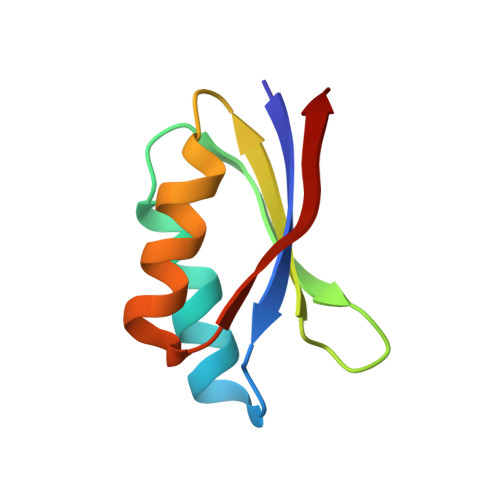A designer rice NLR immune receptor confers resistance to the rice blast fungus carrying noncorresponding avirulence effectors.
Liu, Y., Zhang, X., Yuan, G., Wang, D., Zheng, Y., Ma, M., Guo, L., Bhadauria, V., Peng, Y.L., Liu, J.(2021) Proc Natl Acad Sci U S A 118
- PubMed: 34702740
- DOI: https://doi.org/10.1073/pnas.2110751118
- Primary Citation of Related Structures:
7DV8 - PubMed Abstract:
Plant nucleotide-binding and leucine-rich repeat (NLR) receptors recognize avirulence effectors directly through their integrated domains (IDs) or indirectly via the effector-targeted proteins. Previous studies have succeeded in generating designer NLR receptors with new recognition profiles by engineering IDs or targeted proteins based on prior knowledge of their interactions with the effectors. However, it is yet a challenge to design a new plant receptor capable of recognizing effectors that function by unknown mechanisms. Several rice NLR immune receptors, including RGA5, possess an integrated heavy metal-associated (HMA) domain that recognizes corresponding Magnaporthe oryzae Avrs and ToxB-like (MAX) effectors in the rice blast fungus. Here, we report a designer rice NLR receptor RGA5 HMA2 carrying an engineered, integrated HMA domain (RGA5-HMA2) that can recognize the noncorresponding MAX effector AvrPib and confers the RGA4-dependent resistance to the M. oryzae isolates expressing AvrPib, which originally triggers the Pib-mediated blast resistance via unknown mechanisms. The RGA5-HMA2 domain is contrived based on the high structural similarity of AvrPib with two MAX effectors, AVR-Pia and AVR1-CO39, recognized by cognate RGA5-HMA, the binding interface between AVR1-CO39 and RGA5-HMA, and the distinct surface charge of AvrPib and RAG5-HMA. This work demonstrates that rice NLR receptors with the HMA domain can be engineered to confer resistance to the M. oryzae isolates noncorresponding but structurally similar MAX effectors, which manifest cognate NLR receptor-mediated resistance with unknown mechanisms. Our study also provides a practical approach for developing rice multilines and broad race spectrum-resistant cultivars by introducing a series of engineered NLR receptors.
Organizational Affiliation:
State Key Laboratory of Agrobiotechnology, China Agricultural University, Beijing 100193, China.














